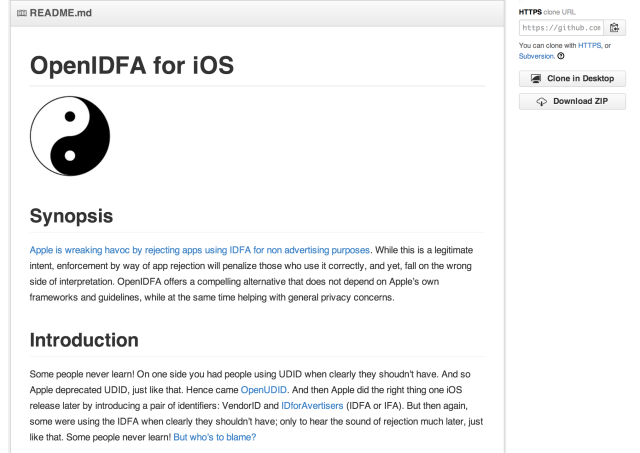Following Apple’s crackdown on mobile apps’ usage of IDFA (Identifier for Advertisers) – that is, it’s rejecting apps which are pulling the identifier for non-advertising related purposes – Appsfire is proposing an alternative solution. Called “OpenIDFA,” the technology allows for the type of tracking use cases that Apple’s ban could prevent, while still protecting end user privacy by offering built-in expiration that prevents the possibility of long-term tracking.
For background, starting last week, Apple began to reject apps that were pulling the IDFA identifier, but were not showing any ads. Likely, this is an effort to prevent apps from tracking their users and warehousing that data for a variety of purposes, ranging from retargeting campaigns to building user profiles. These are thing that Apple (and potentially the government’s regulatory bodies) could see as eroding user privacy.
But the change affects other common uses of the IDFA too. Publishers are the only ones who are supposed to access the IDFA, not advertisers. But because ad networks charge advertisers based on installs that are run by end users, the advertiser passes the identifier to the ad network for tracking purposes, explained a blog post by Tapstream about the rejections. This use case, apparently, may not be okay.
Also, as explained on the OpenIDFA Github page, “IDFA allegedly is ok for its initial intent: ad conversion tracking. Advanced advertising techniques, however, need to start tracking earlier, and therefore need the actual IDFA despite not showing an ad then and there.”
OpenIDFA, as it stands at launch, is designed to allow for a handful of specific advertising-related use cases which Apple’s changing policy could have otherwise affected, including:
- Server-side frequency capping: use OpenIDFA to minimize exposure of a given ad by counting how many times a given identifier (or a trio, see below) has been exposed to it.
- Conversion tracking: use OpenIDFA to record an impression, a click (tap) event, and then once the advertised app is installed and launched, match the current OpenIDFA to attribute the source.
- Pre-impression event tracking for re-engagement and re-targeting: use OpenIDFA to track e-commerce events inside the advertiser app; then match the OpenIDFA on the publisher’s side to present a higher impact advertisement.

Or, if you’re just following the news a high-level, OpenIDFA is aiming to offer a way for publishers and ad professionals to continue to perform various tasks surrounding ad tracking, while still taking into account the need for consumer privacy.
In Apple’s world, users are able to reset their device’s Advertising Identifier at any time, but it’s an option in iOS’s Settings many users are unaware of, or don’t understand. With OpenIDFA, there’s built-in expiration which prevents data hoarding and long-term tracking – the very real privacy concerns Apple is presumably trying to address with its policy changes. OpenIDFA can only be accessed by those that call it within a day, making it more ephemeral than Apple’s counterpart, while respectful of Apple’s (supposed) intent surrounding these recent changes.
The OpenIDFA technology itself is free to use, interoperable, decentralized, but is not open source. Instead, it’s distributed under the Creative Commons license (Attribution BY + NoDerivatives ND).
Yann Lechelle, Appsfire’s co-founder and CTO, thought up OpenIDFA “over a few sleepless nights,” and has now shared his creation on Github.
Appsfire, you may recall, has a history of quickly shipping solutions to the developer and advertising community following Apple policy changes to serve as interim solutions. For instance, it rolled out OpenUDID back in 2011 after Apple’s decision to phase out usage of this more unique identifier. A number of mobile ad companies soon supported the technology, and later Apple released its own solutions, with IDFV (Vendor ID) and IDFA.
